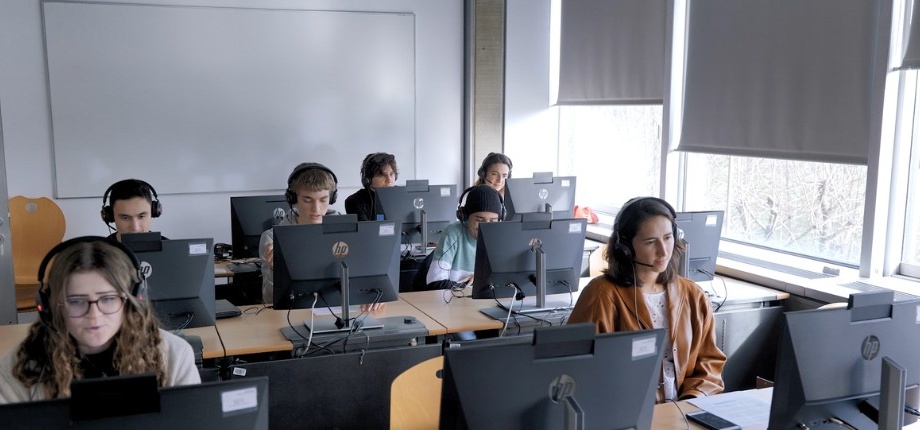Languages and Cultures
With almost 35% international students, representing 20 nationalities, École nationale des ponts et chaussées emphasizes language, academic, professional, and multicultural skills.
Facts
- 13% of studies (excluding internships and work placements) are devoted to languages.
- On average, a student spends one year of his or her studies abroad.
- The practice of languages and contact with other cultures contribute an essential element to each student’s personal experience and development.
Preparing students for a multicultural career
The ENPC Language and Culture Department offers a program that prepares students for an international and multicultural career by
- Teaching a dozen foreign languages: students must choose two languages, including English (mandatory), French as a Foreign Language (mandatory for international students), Spanish, Italian, German, Chinese, Arabic, Portuguese, Russian and Japanese;
- Active oral expression during simulated situations (debating, work meetings, negotiations, job interviews, etc.);
- Study abroad trips;
- Tandem work between two students who learn each other's native language. There are two types of this peer-based learning: an open tandem (without credit) and a credited tandem (usually during S4) with a DLC tutor.
Language study requirements
Study two languages, including English
- English (mandatory for all students);
- Second language of your choice: German, Arabic, Chinese, Spanish, Italian, Portuguese, Russian or Japanese;
- French as a Foreign Language (mandatory for non-French speaking international students).
Obtain an English proficiency certificate (and a French one for international students)
- To pass the TOEIC test with a minimum score of 785 points (B2 + level according to the Common European Framework of Reference for Languages, see below) or obtain a valid equivalent (IELTS, TOEFL, Cambridge CAE...) attesting to the same level.
- To pass the minimum B2 level in FLE for non-French speaking international students (TCF test during S5).
Spend a minimum of eight consecutive weeks abroad during the course of your studies ("international obligation" for all students beginning their studies in the first year at the School - S1)
Several options are offered:
- Erasmus semester in S2, S3, S4 or S5 in a partner institution;
- Short or long internship in a company between the second and third year;
- End-of-studies project during the last semester of studies;
- Third year abroad: academic training in a higher education institution outside France.




